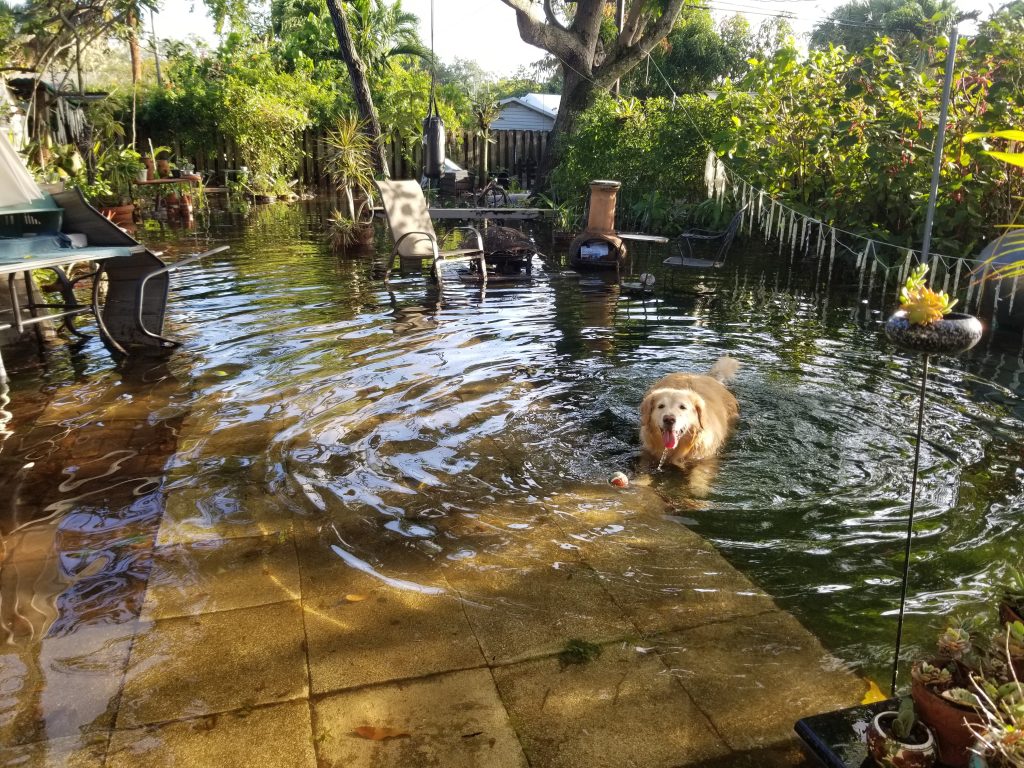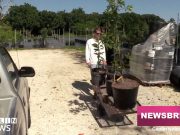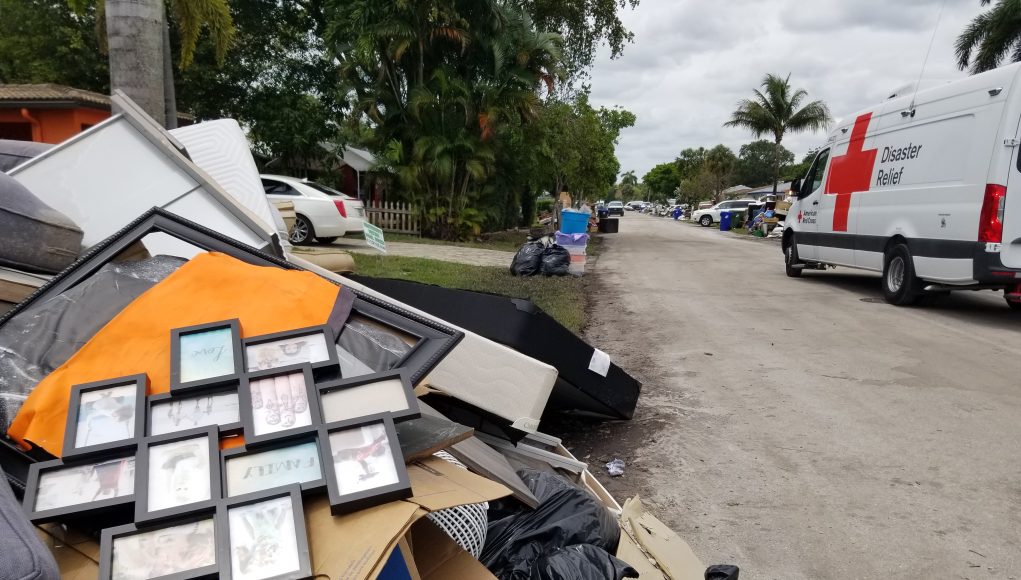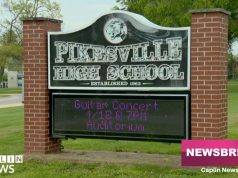On April 12, 2023, 26 inches of rain fell on Edgewood, flooding and devastating the Fort Lauderdale community. People there still get nervous when it storms. A year after the historic flash flood, residents struggle to find alternative housing while their homes are being rebuilt.
Kitty McGowan, president of the Edgewood Civic Association, has lived in her home for five years. She experienced over 3 feet of rain inside her house last year and was only recently able to move back in.
“It’s like closing the barn door after the horse is out,” McGowan stated, reflecting on the steps that should have been taken to prevent the Edgewood community from losing homes.
Many Edgewood community members like McGowan live in limbo a year later, trying to determine their next step.
“The owner told me that because we are not in a flood zone, I would not need the insurance,” said Edgewood Community member Dawn Beemer, who has lived in Fort Lauderdale since 2008.

Edgewood acted as a basin for the overflow from the nearby Fort Lauderdale-Hollywood International Airport, which struggled to drain its own floodwater. Exceptionally high tides, known as king tides, only worsened the situation. The Federal Emergency Management Agency (FEMA) had to demolish homes like Beemer’s that would have remained standing under different circumstances.
A year later, she is still figuring out her next steps. While on an unpaid leave of absence from her job, Beemer has spent roughly $80,000 to restore her home and her mother’s.
“I have had no income since September, and financially and mentally, I am broke,” said Beemer.
For homeowners like McGowan and Beemer, getting help from Broward County’s Property Appraiser Marty Kiar is the solution. Kiar helps homeowners determine property value for taxes and fill out tax exemption forms. Those who were affected by the floods and unable to reside in their homes for over a month would only need to pay property taxes on the land if the house was destroyed.
“If they were out of their home anytime in 2023 for more than 30 days because their home was destroyed and uninhabitable, they’ll get a tax reduction,” Kiar said. “They can sign up for it so as not to pay property taxes on the home that was destroyed for the time it was destroyed last year; they have until March 1, 2024.”
In addition to seeking assistance from the property appraiser, Fort Lauderdale officials are working with the Urban Land Institute to analyze flood-prone city roads and determine which ones will be elevated. They also perform maintenance from Osceola Creek to Marina Mile Boulevard in Edgewood to improve stormwater conveyance. As the community continues to cope with the aftermath of the floods, solidarity and action are needed.
“I have been living here since 1967 and have invested everything into this home,” McGowan said. “Between insurance rates and taxes combined, it is more than my entire mortgage itself.”
In an article by WLRN, Fort Lauderdale Mayor Dean Trantalis and Fort Lauderdale Fire Rescue battalion chief Mike Salzano contended that the city should have worked harder to improve its infrastructure while expanding.
“Had we done this ten years ago, when the studies were telling us that these projects needed to be done, we would not have had as significant a problem as we suffered this past April,” Trantalis said.

A 2020 article in the Tampa Bay Times described Fort Lauderdale residents who dealt with six main sewer breaks in December 2020 from Rio Vista North to Coral Ridge. The issue continued in January and February. Furthermore, in December 2019, Rio Vista was hit by a tidal wave of sewage.
“These are old pipes that need to be replaced,” said city manager Chris Lagerbloom, emphasizing that the issue should have been addressed before 2019 when the pipes burst and released 52 million gallons of sewage into the waterways of Fort Lauderdale.
What the future may hold
With the Fort Lauderdale community still deciding what to do next, FEMA is offering support by creating areas in nearby neighborhoods where homeowners can file their claims so the agency caninspect their homes for damage. Now, it is up to local city and county officials to make a change for affected homeowners.
Since the flood, city officials have launched the Fortify Lauderdale plan. The initiative will put $500 million into improving the stormwater infrastructure of 25 neighborhoods in Fort Lauderdale.
“We are installing more tidal control valves, drainage pipes, building new outfall connections and drainage structures, creating new catch basins, raising seawalls, rebuilding swales, and constructing stormwater reserves,” assured Mayor Dean Trantalis at his State of the City Address on October 4, 2023.

































